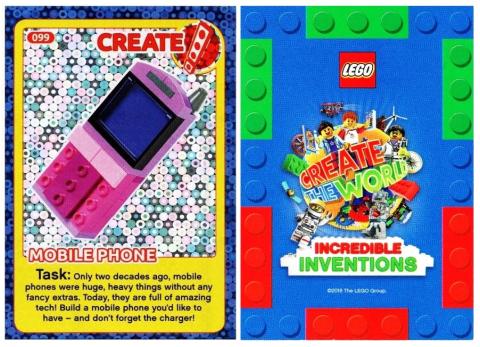
Younger readers may not realise this, but at one time owning a computer was a big thing, and not everyone did. For one thing they were expensive - according to Columbia University, the first personal computer, the 1957 IBM 610 Auto-Point Computer, cost $55,000 - and they reckon that this equates to over $460,000 today. There is also a photo of it, which will stretch your definition of the word "personal" by a long way. Also, they were complex, way too much so for ordinary people. And the sort of people who used computers were not really the target audience for emoticons.
This all changed when the mobile phone was invented. The first one was released commercially by Motorola in 1983, and it was the DynaTAC 8000X. It may have weighed the same as a brick, 2 kilos, and it looked like one too, and the reception was pretty sketchy which is what comes of inventing a machine without the infrastructure already in place. But it was an instant hit, despite it costing almost four thousand dollars - and the people behind it knew that the way forward was to get a lot of them out there, so they made them smaller, cheaper, and faster. Within ten years they had dropped the price by three thousand dollars. That`s about what an iPhone X cost to buy in 2017.
At first you had to buy a separate keyboard to send emojis - as, presumably, did your recipient - but by 1997 they were becoming standard issue on many new phones.Today we kind of take them for granted, which is sad. So maybe after this week you will appreciate them a bit more.
By the way, this is quite an old phone, with the small screen at the top and the keyboard below - the first full screen, touchscreen phone had been invented in 2006.
To the card! First off, you may be asking why is this set not listed as commercial, when the packets were sold in store. However if you spent over £10 at once on shopping you were given a packet of the cards free, so those cards are technically trade - though it is quite impossible to now therefore tell which cards were which.
You will also find this set listed as being issued by Lego, but the Lego part was only in that the inventions were shown made of Lego bricks with the idea that the collector tried to copy the model on the card with their own Lego. Some of the models were rather complex, and most would have required the purchase of other parts to complete them, and this was probably the idea.
There was also an album, quite a good one, not only a place to stick the cards, but with games and extra information, as well as ideas for other models. It was quite large format though, at 270 x 202 m/m, simply because the cards were also large, at 80 x 55 m/m.
Now I have had some correspondence this week with Mr. John Levitt, about the card of the mobile phone, made of Lego, which I featured last week. It turns out that other games can be played with these cards, and that both cards show elements for the three games. The first is a form of "Dominoes" using the coloured Lego bricks shown on the back. The second concerns the fronts of the cards, which, in the top right hand corner show "create", and you also have an image of a rock for "Rock, Paper and Scissors".
The rules and playing instructions are described in the album - the most important for us being the "Dominoes", which has led to various different card backs being produced in order to play this game. In order to visualise the variations you need to group the coloured bricks together i.e. the top three bricks and the bottom three bricks, at which point you will find that six different colours exist, Light Blue, Red, Yellow, Green, Orange and Purple with each colour being found at the top and at the bottom. An example being 6 different cards with Top Colour Light Blue and the bottom colour being one of the six mentioned etc.
In theory you would end up with 36 different backs, and he has 21 different backs but has seen images of more. With 140 numbered cards you also get variants with the front images, some numbers have got as many as 11 different backs and some as little as two. Thus with all 140 cards having multiple backs he has amassed a total of 778 different cards but again that total is likely to rise if more different backs exist. In the dream of finding out whether there are more, he has included his listing, which you can download by clicking the file icon here
